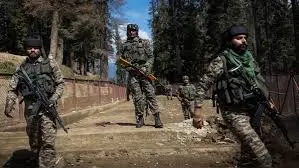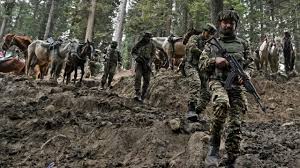Explore the latest developments in the India – Pakistan conflict, analyzing the causes, key events, and international responses to the ongoing tensions.
The India-Pakistan conflict has reached a critical juncture in 2025, with escalating tensions threatening regional stability. The catalyst for this crisis was the tragic Pahalgam attack on April 22, 2025, where 26 tourists were killed in Indian-administered Kashmir. This incident has led to a series of retaliatory actions, diplomatic breakdowns, and military confrontations between the two nuclear-armed neighbors.
The Pahalgam Attack: A Deadly Catalyst
On April 22, 2025, armed militants opened fire on a group of tourists in the Baisaran Valley near Pahalgam, Anantnag district, resulting in 26 fatalities and over 20 injuries. The attackers, reportedly armed with AK-47s and M4 carbines, targeted individuals based on religious identity, sparking outrage across India. The Resistance Front, an offshoot of the Pakistan-based Lashkar-e-Taiba, initially claimed responsibility but later retracted their statement. India has accused Pakistan of supporting cross-border terrorism, a charge Islamabad denies .

Diplomatic Breakdown and Retaliatory Measures
In response to the attack, India suspended the 1960 Indus Waters Treaty, expelled Pakistani diplomats, and closed its borders. Pakistan retaliated by halting trade, closing airspace to Indian airlines, and suspending the Simla Agreement. Both nations have engaged in diplomatic exchanges, with Pakistan preparing to challenge India’s suspension of the water treaty through international legal avenues .
Military Confrontations and Border Skirmishes
Following the diplomatic fallout, skirmishes erupted along the Line of Control (LoC). On April 24, 2025, an Indian soldier was killed, and two others were wounded during a gunfight with insurgents in the Basantgarh area of Udhampur. In the same encounter, senior Lashkar-e-Taiba commander Altaf Lalli was killed by security forces . These border clashes have continued sporadically, raising fears of a broader military conflict.
Exercise Aakraman: A Show of Strength
In a display of military readiness, India conducted ‘Exercise Aakraman,’ involving elite Air Force pilots executing advanced combat missions. The exercise showcased India’s frontline combat fleet, including Rafale and Sukhoi Su-30MKI aircraft, and highlighted the nation’s preparedness for high-intensity conflict scenarios .
International Reactions and Calls for De-escalation
The international community has expressed deep concern over the escalating tensions. The United Nations and the United States have urged both India and Pakistan to de-escalate the situation and engage in dialogue. Diplomatic missions have been intensified, with global leaders emphasizing the need for restraint to prevent a full-scale war between the two nuclear-armed nations .
The Path Forward: Diplomacy or Conflict?
As of April 30, 2025, the situation remains volatile. Both India and Pakistan have mobilized military forces along the LoC, and the risk of further escalation persists. The international community continues to monitor the situation closely, advocating for diplomatic engagement to resolve the crisis peacefully. The coming days will be critical in determining whether the region moves towards conflict or finds a path to de-escalation.

Conclusion
The 2025 India-Pakistan conflict underscores the fragile nature of regional peace in South Asia. The Pahalgam attack has not only intensified bilateral tensions but also highlighted the broader geopolitical challenges facing the region. As both nations stand at a crossroads, the choices made in the coming days will have profound implications for regional stability and international security.




